- Catherine
- September 30, 2023
- 1:47 am

Harry Collins
Answered on 1:47 am
It depends on the type and compatibility of the 100G QSFP copper cables and the 40G QSFP ports. Generally speaking, some 100G QSFP copper cables can be used for 40G, but not all of them. Here are some factors to consider:
The 100G QSFP copper cables can be either passive or active. Passive cables have no signal amplification or equalization, while active cables have built-in electronics that enhance the signal quality. Passive cables are usually shorter and cheaper than active cables, but they have more insertion loss and crosstalk. Active cables can support longer distances and higher data rates, but they consume more power and may have compatibility issues with some devices.
The 100G QSFP copper cables can be either direct-attach or breakout. Direct-attach cables have QSFP connectors on both ends, while breakout cables have QSFP connectors on one end and four SFP+ connectors on the other end. Direct-attach cables are used to connect two 100G ports, while breakout cables are used to connect one 100G port to four 10G or 25G ports.
The 40G QSFP ports can support different standards and protocols, such as 40GBASE-CR4, 40GBASE-SR4, 40GBASE-LR4, etc. Each standard has different requirements for the cable length, wavelength, fiber type, etc. Some standards are compatible with each other, while some are not.
Therefore, to use a 100G QSFP copper cable for 40G, you need to check the following:
The cable type (passive or active) and length match the specifications of the 40G standard you want to use.
The cable connector (direct-attach or breakout) matches the configuration of the 40G port you want to use.
The cable vendor and model are compatible with the device manufacturer and model you want to use.
People Also Ask
Understanding the Power of NVIDIA’s BlueField-3 DPU
Introduction When working with NVIDIA’s H100 SXM servers, you may often see a configuration that includes two BFD-3 units. This raises questions, especially since the system already comes with eight CX-7 400G network cards. What are the fundamental differences and roles of BFD-3 compared to CX-7? Moreover, why does BFD
Joint Testing of 400GbE Optical Transmission System by FiberMall
FiberMall, in collaboration with Lumentum-Neophotonics, Cisco-Acacia, and EXFO, has successfully proposed a 927-kilometer end-to-end interoperable 400-GbE (Gigabit Ethernet) optical transmission system. This system integrates the latest 400G pluggable optical modules, addressing the needs of Ethernet clients (IEEE 802.3 400GBASE), data center interconnects (OIF 400-ZR), and metro/regional (400G OpenROADM) networks. The
Mellanox MMA1T00-HS: The Ultimate Guide to a 200G QSFP56 Optical Transceiver
As the technology for data centers has changed, so has the demand for greater bandwidth and transmission of data. The Mellanox MMA1T00-HS, which is a 200G QSFP56 optical transceiver, is a breakthrough in the field of connectivity as it offers a powerful solution for new-age network systems. This is a
Unlocking the Potential of the QSFP28 SR4 Optical Transceiver Module
The QSFP28 SR4 Optical Optical Transceiver Module addresses the issues surrounding high-speed data communication system designs, especially for modern data centers and high-performance computing environments. However, increased data requirements lead to solutions that are efficient, inexpensive, and reliable, with the more relevant being the ability to provide connections of up
How Does Combo PON Integrate GPON and XGSPON?
As fiber-to-the-home (FTTH) network technology rapidly advances, GPON (Gigabit Passive Optical Network) has become the standard choice for most operators worldwide. However, with increasing demands for higher bandwidth, symmetrical rates, and lower latency, XGSPON (10G Symmetric Passive Optical Network) is gaining attention as the next-generation fiber access technology. In this
Mastering the 400gbase-dr4 Transceiver: A Comprehensive Guide to Optical Excellence
The evolution of optical transceiver technology has been a major factor in fulfilling the increasing demand for data transfer rates and capacity in contemporary networks. 400GBASE-DR4 transceiver is one of the latest examples of such a technology, which is developed specifically to allow faster data communication via single-mode fiber optic
Related Articles
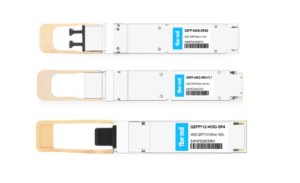
800G SR8 and 400G SR4 Optical Transceiver Modules Compatibility and Interconnection Test Report
Version Change Log Writer V0 Sample Test Cassie Test Purpose Test Objects:800G OSFP SR8/400G OSFP SR4/400G Q112 SR4. By conducting corresponding tests, the test parameters meet the relevant industry standards, and the test modules can be normally used for Nvidia (Mellanox) MQM9790 switch, Nvidia (Mellanox) ConnectX-7 network card and Nvidia (Mellanox) BlueField-3, laying a foundation for
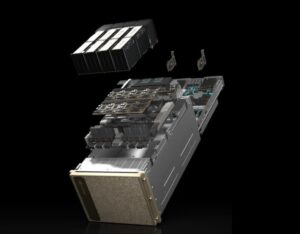
Understanding the Power of NVIDIA’s BlueField-3 DPU
Introduction When working with NVIDIA’s H100 SXM servers, you may often see a configuration that includes two BFD-3 units. This raises questions, especially since the system already comes with eight CX-7 400G network cards. What are the fundamental differences and roles of BFD-3 compared to CX-7? Moreover, why does BFD
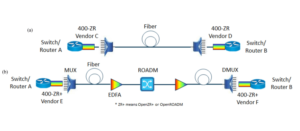
Joint Testing of 400GbE Optical Transmission System by FiberMall
FiberMall, in collaboration with Lumentum-Neophotonics, Cisco-Acacia, and EXFO, has successfully proposed a 927-kilometer end-to-end interoperable 400-GbE (Gigabit Ethernet) optical transmission system. This system integrates the latest 400G pluggable optical modules, addressing the needs of Ethernet clients (IEEE 802.3 400GBASE), data center interconnects (OIF 400-ZR), and metro/regional (400G OpenROADM) networks. The
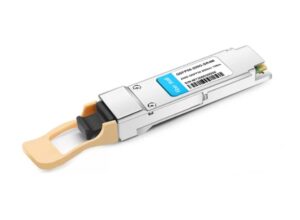
Mellanox MMA1T00-HS: The Ultimate Guide to a 200G QSFP56 Optical Transceiver
As the technology for data centers has changed, so has the demand for greater bandwidth and transmission of data. The Mellanox MMA1T00-HS, which is a 200G QSFP56 optical transceiver, is a breakthrough in the field of connectivity as it offers a powerful solution for new-age network systems. This is a
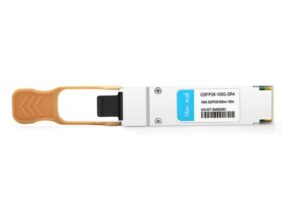
Unlocking the Potential of the QSFP28 SR4 Optical Transceiver Module
The QSFP28 SR4 Optical Optical Transceiver Module addresses the issues surrounding high-speed data communication system designs, especially for modern data centers and high-performance computing environments. However, increased data requirements lead to solutions that are efficient, inexpensive, and reliable, with the more relevant being the ability to provide connections of up
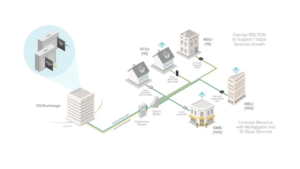
How Does Combo PON Integrate GPON and XGSPON?
As fiber-to-the-home (FTTH) network technology rapidly advances, GPON (Gigabit Passive Optical Network) has become the standard choice for most operators worldwide. However, with increasing demands for higher bandwidth, symmetrical rates, and lower latency, XGSPON (10G Symmetric Passive Optical Network) is gaining attention as the next-generation fiber access technology. In this
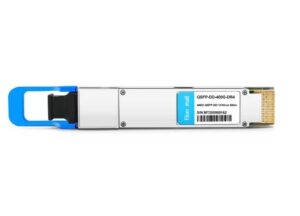
Mastering the 400gbase-dr4 Transceiver: A Comprehensive Guide to Optical Excellence
The evolution of optical transceiver technology has been a major factor in fulfilling the increasing demand for data transfer rates and capacity in contemporary networks. 400GBASE-DR4 transceiver is one of the latest examples of such a technology, which is developed specifically to allow faster data communication via single-mode fiber optic
Related posts:
- Can the Same Module on the NDR Switch Plug an NDR Cable into One Port and an NDR 200 Splitter Cable into Another Port?
- Any Specific Requirements for the Latency Performance of CX7 NIC?
- What Does It Mean When an Electrical or Optical Channel is PAM-4 or NRZ?
- Are 100G Copper Cables Supported on All Arista Switches?
